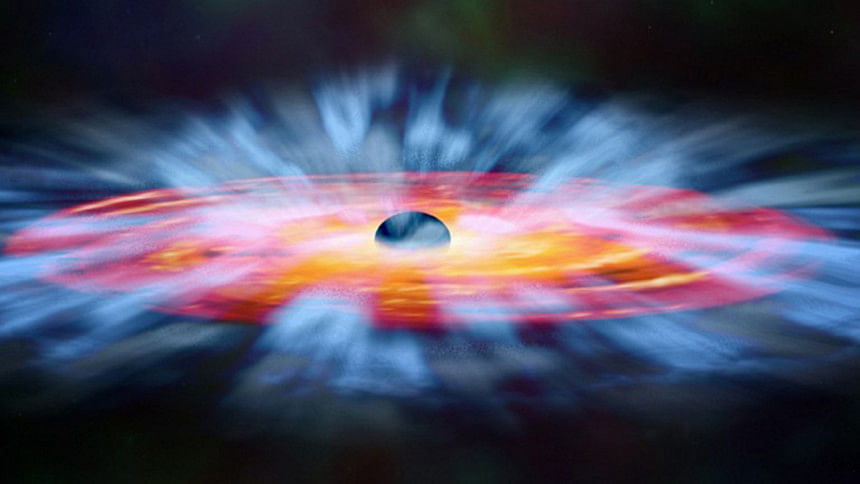Using universe’s gravity to see into a black hole

Researchers at the European Space Agency harness the natural lensing properties of cosmic gravity to get a closer look at a black hole, reports Cnet.com.
The inner regions of a black hole have been observed by a team of scientists, but not through the power of telescopes alone.
Researchers at the European Space Agency have tapped into gravitational lensing to learn more about these mysterious objects -- in particular, a supermassive black hole by the name of PKS 1830-211, some 11 billion light-years away and one of the most powerful known objects of its kind.
"From Earth, black holes are tiny. They're just so very far away. Trying to observe PKS 1830-211 is like trying to look at an ant sitting on the Moon," said lead author Andrii Neronov of the University of Geneva, Switzerland.
His team's paper was published this week in the journal Nature Physics.
"None of our telescopes can observe something so small, so we used a trick to resolve the ant: a huge gravitational lens," Neronov said.
Gravitational lenses occur when a high-mass object, such as a galaxy or galaxy cluster, between the viewer and the target pulls light in a curve in such a way that it magnifies what is behind it.
The Integral, Fermi and Swift space telescopes in orbit around the Earth were turned on the gravitational lens between Earth and PKS 1830-211 to study the area around the black hole.
What the team of astronomers was looking for in particular was to study the behaviour of the gamma rays around the black hole -- highly energetic radiation emitted by some of the most powerful objects in the universe.
Around black holes, gamma rays move around at close to the speed of light, thought to be emitted from the wild spin of superheated material as it is devoured by the black hole.
Our current telescopes, however, are not powerful enough to see clearly into these regions, which mean it is difficult to understand what is happening.
PKS 1830-211 was the perfect candidate for this research. The object was identified as a particularly strongly lensed object back in 1991, and the European Southern Observatory released research in 2013 wherein astronomers had observed PKS 1830-211 through a gravitational lens.
However, this is the first time astronomers have attempted to use a gravitational lens to examine black hole gamma ray activity, observing a patch of sky about 100 times the distance between the Earth and sun in size.
Using the combined might of the telescopes and the gravitational lens, the team was able to resolve the region, getting a more detailed view of the radiation.
Fermi detected the more energetic gamma rays, coming from the tiny base of the gamma ray jet.
The lower energy gamma rays, detected by Integral, were emitted from the much larger surrounding region.
Integral and Swift were also used to examine X-rays found to be emanating from a region some 400 billion kilometres around the black hole.
"Our observations demonstrate that the gamma rays come from the direct vicinity of the black hole itself. This gives us some idea about what is and isn't important in generating the jets," Neronov said.
"It's amazing to be able to see such tiny things at such enormous distances from us. I'm very excited to have a 'black-hole-scope' to investigate the inner regions of the jets."

 For all latest news, follow The Daily Star's Google News channel.
For all latest news, follow The Daily Star's Google News channel. 



Comments